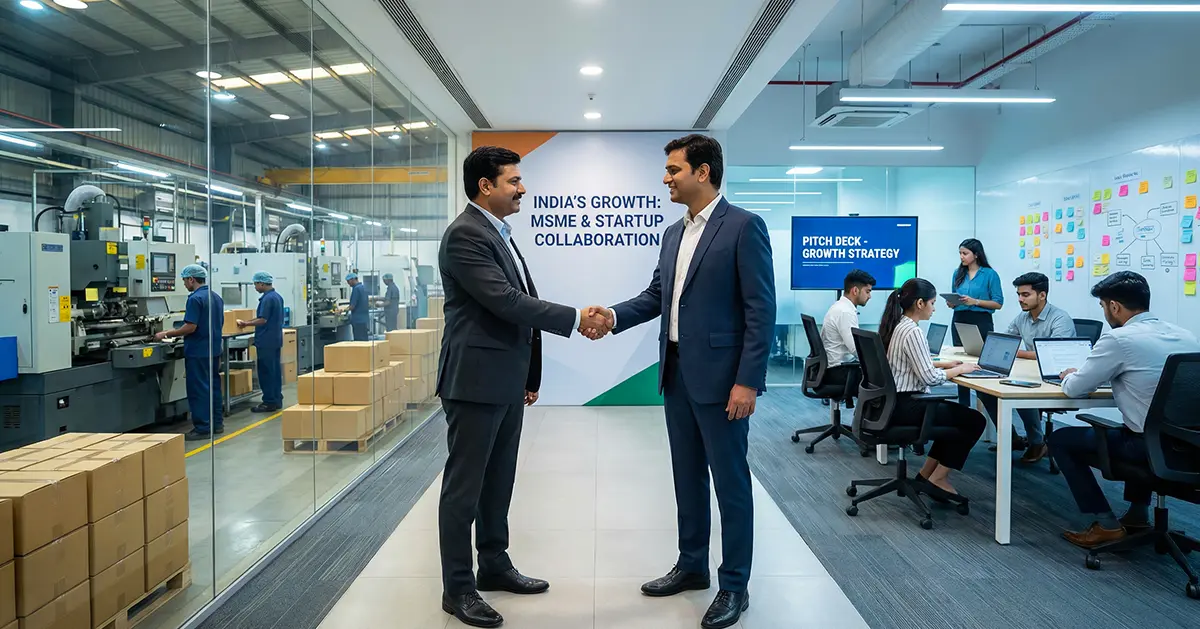
Introduction
The Liberalized Remittance Scheme is a pivotal aspect of India’s financial framework, designed to regulate and facilitate outward remittances by Indian residents. Introduced by the Reserve Bank of India (RBI), the scheme enables individuals to send money abroad for various purposes, including education, medical treatment, travel, foreign investments, and even the purchase of assets overseas. Over the years, the LRS has gained significant traction, becoming a widely used channel for those looking to explore investment abroad opportunities or conduct international transactions while remaining compliant with regulatory guidelines.
With increasing globalization and rising aspirations among Indian residents to expand their financial footprint beyond domestic borders, the LRS has evolved to accommodate the growing demand for seamless remittance services. However, with these opportunities come responsibilities, as the RBI has implemented stricter oversight on capital outflows to prevent misuse and ensure that remittances align with the broader economic policies of the country. Recent updates have introduced enhanced monitoring mechanisms, requiring individuals to stay well-informed about the permissible limits, documentation requirements, and tax implications associated with outward remittances.
Understanding the purpose, eligibility, and scope of LRS is essential for anyone looking to remit funds abroad, whether for personal or investment-related reasons. While the scheme provides a structured framework for international transactions, it is crucial to navigate it carefully to avoid potential compliance issues. This article serves as a comprehensive guide to the Liberalized Remittance Scheme, shedding light on its key features, permitted transactions, recent regulatory changes, and how individuals can effectively leverage it for global financial activities. Whether you are planning to invest in foreign assets, support a family member studying abroad, or explore business opportunities overseas, staying informed about LRS regulations will ensure a smooth and hassle-free remittance experience.
Also Read: International Business Environment
What is the Liberalized Remittance Scheme?
The scheme is a regulatory framework set by the Reserve Bank of India (RBI) that allows Indian residents to remit funds for various purposes. Introduced to simplify the process of making foreign investments and transferring money abroad, the scheme has evolved over the years. Under the scheme, residents can remit up to a specified limit (subject to periodic updates) for purposes such as travel, education, medical treatment, and even for investment in stocks, real estate, or businesses.
One of the key advantages of the LRS is that it simplifies the process for individuals looking to invest. The scheme is designed to streamline transactions while ensuring that all transfers comply with RBI guidelines. Additionally, it plays a significant role in managing capital by setting clear guidelines and limits, ensuring that the financial system remains stable while providing ample scope for growth through investments.
What Is The Purpose of This Scheme?
The primary purpose of the Liberalized Remittance Scheme is to facilitate seamless cross-border transactions and support Indian residents in exploring investments abroad. Here are some of its core objectives:
- Ease of Remittance: The scheme provides a straightforward process for remitting funds abroad. This not only supports students studying overseas or individuals seeking medical treatment but also simplifies the process of making international investments in emerging global markets.
- Promotion of investment abroad: The scheme encourages Indian residents to consider investment abroad opportunities by allowing them to invest in foreign equities, real estate, and businesses. This diversification is beneficial for individuals looking to hedge against domestic market volatility.
- Regulatory Oversight: The scheme serves as a tool for monitoring capital. With enhanced RBI rules, the scheme ensures that while individuals have the flexibility to invest and remit funds abroad, the overall economic stability is maintained.
- Simplification of Process: By reducing bureaucratic hurdles, the LRS supports smoother processing of remittances, making it easier for individuals to engage in investments and investment abroad ventures without unnecessary delays.
Through these objectives, the scheme has become an integral part of the financial landscape in India, supporting a wide array of transactions while keeping a close watch on the capital in accordance with the latest updates.
What Are The Eligible Transactions Under LRS?
Under the scheme, a variety of transactions are permitted, making it a versatile tool for facilitating foreign investments and remittances for personal use. Eligible transactions include:
- Personal Remittances: Individuals can remit money for personal needs such as education, travel, and medical expenses. This flexibility helps those who need to finance studies or treatments abroad.
- Foreign Investments: The scheme permits investments in shares, debentures, and mutual funds overseas. This makes the scheme a vital instrument for those interested in investments abroad and investment abroad opportunities.
- Real Estate Purchases: Indian residents can use the LRS to invest in real estate abroad, subject to specific guidelines. This is particularly useful for diversifying asset portfolios.
- Gifts and Donations: Remittances made for gifting or donating funds to relatives or charitable organizations overseas are allowed under the scheme.
- Business Investments: Indian entrepreneurs can also use the scheme for setting up joint ventures or for making strategic investments in foreign companies, thereby engaging in foreign investments that support the expansion of business operations.
It is important to note that while the Liberalized Remittance Scheme allows a wide range of transactions, all transfers must adhere to the current RBI updates to ensure that capital is within permissible limits.
How to Use the Scheme for International Transactions?
Using the scheme for international transactions is a relatively simple process, thanks to streamlined guidelines issued by the RBI. Here’s a step-by-step guide on how to leverage the scheme for foreign investments and other remittance needs:
- Determine Eligibility: Before initiating a transfer, ensure that you are eligible under the scheme guidelines. Generally, resident individuals and certain entities are allowed to remit funds.
- Choose the Purpose: Identify the purpose of your remittance—whether it is for personal needs like education, travel, medical treatment, or for foreign investments such as buying stocks or real estate. The purpose of the remittance must be declared accurately.
- Visit Your Bank: Most transactions under the scheme are handled by banks authorized by the RBI. Visit your bank branch or use their online services to initiate the process. Banks will require documentation to comply with RBI rules.
- Fill Out the Form: Complete the necessary forms, providing details about the remittance, including the amount, purpose, and beneficiary details. Accurate details help ensure that your transaction is processed without delays.
- Submit Documentation: Depending on the purpose, you may need to submit additional documents, such as admission letters for education, invoices for medical treatments, or details regarding international investments. Your bank will guide you through the documentation process.
- Compliance and Processing: Once all forms and documents are submitted, the bank will process your request in line with current RBI guidelines. The bank monitors the capital to ensure it falls within the permissible limits.
- Confirmation: Upon successful processing, you will receive confirmation of your remittance. The funds are then transferred abroad, allowing you to proceed with your investment or any other international transaction.
By following these steps, you can use the Liberalized Remittance Scheme with ease to facilitate foreign investments and other international transactions while ensuring full compliance with the latest updates.
What Are The Limitations and Restrictions of the Scheme?
While the scheme offers numerous benefits, it also comes with limitations and restrictions designed to prevent misuse and control the capital. Here are some of the key limitations:
- Monetary Limits: The scheme specifies an annual limit for remittances per individual. This limit is periodically reviewed and adjusted by the RBI to manage foreign investments and ensure that capital outflows remain under control.
- Purpose-Specific Conditions: Not all transactions are eligible under the LRS. For instance, remittances for speculative activities or those that are not supported by appropriate documentation may be restricted.
- Non-Resident Transactions: The scheme is strictly for resident individuals. Non-residents have separate guidelines, and attempting to remit funds outside the scope of the scheme can lead to penalties under current RBI rules.
- Reporting Requirements: Transactions under the Liberalized Remittance Scheme must be reported by the banks to the RBI. This helps in monitoring the capital and ensuring that all foreign investments are recorded and managed according to the prescribed norms.
- Purpose Verification: The banks and authorities may verify the declared purpose of the remittance. If the purpose is found to be misleading or false, the transaction could be reversed, and penalties may be imposed.
These limitations ensure that while the scheme facilitates foreign investments and remittances for personal and business purposes, it also upholds the integrity of the financial system by controlling excessive capital in line with RBI updates
Conclusion
The Liberalized Remittance Scheme (LRS) serves as a crucial financial instrument for Indian residents, offering a structured and compliant way to make foreign investments and remit funds for various purposes. Whether it’s investing in global markets, purchasing property abroad, covering education and medical expenses, or supporting family members overseas, the scheme provides a well-regulated framework that ensures ease of transactions while adhering to RBI guidelines. By understanding its eligibility criteria, permissible transactions, and regulatory limitations, individuals can make informed financial decisions that not only benefit their personal growth but also contribute to India’s evolving economic landscape.
The RBI continually updates and refines the LRS framework to ensure it remains relevant, transparent, and aligned with global financial trends. Staying up to date with these changes is essential for maximizing the benefits of foreign transactions and global investments while maintaining compliance. A well-planned approach to utilizing LRS can open doors to new opportunities and financial diversification on an international scale.
Ready to get started? Let RegisterKaro simplify the complexities of foreign investments, RBI regulations, and international transactions for you. Our team of experts provides tailored financial solutions, regulatory guidance, and end-to-end support to help you make seamless global investments. Reach out to our support team at support@registerkaro.in today and take the first step towards smart international financial planning!
Frequently Asked Questions (FAQs)
1. What is the annual limit under the scheme for remittances?
The annual limit under the LRS is periodically reviewed by the RBI. This limit governs the total amount an individual can remit in a financial year, helping manage capital outflows and ensure that foreign investments remain within a controlled framework.
2. Can I use the scheme for both personal and business purposes?
Yes, the scheme allows remittances for personal needs such as education, travel, and medical treatment, as well as for foreign investments and business ventures abroad. However, the transaction must adhere to the specific guidelines provided under current RBI regulations.
3. How do I initiate a transaction under the scheme?
To initiate a transaction under the LRS, visit an authorized bank, complete the required forms, submit the necessary documents, and declare the purpose of the remittance. The bank will then process the transaction in compliance with RBI regulations, ensuring that capital outflows remain within the set limits.
4. What types of transactions are not permitted under the scheme?
Transactions that involve speculative activities, misrepresentation of the purpose, or any transaction that falls outside the guidelines of the scheme are not permitted. This is to ensure that investments abroad and investment abroad opportunities are pursued in a regulated and transparent manner.
5. Are there any recent updates to the scheme that I should be aware of?
Yes, the LRS is subject to periodic updates by the RBI to better manage capital outflows and align with the evolving global economic environment. Recent changes have focused on enhancing transparency, updating the annual remittance limits, and refining the guidelines for investments and investment abroad. It is advisable to check with your bank or the RBI’s official announcements for the latest updates.




